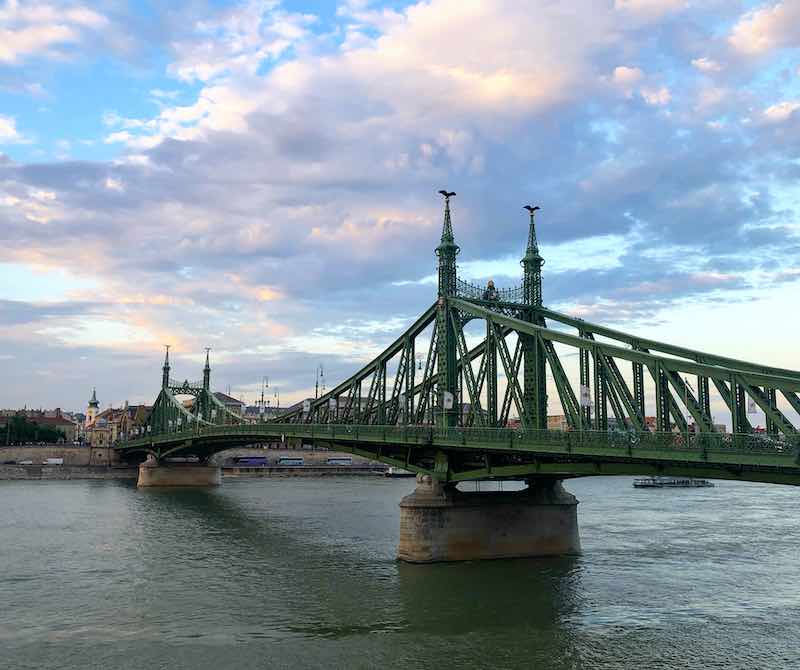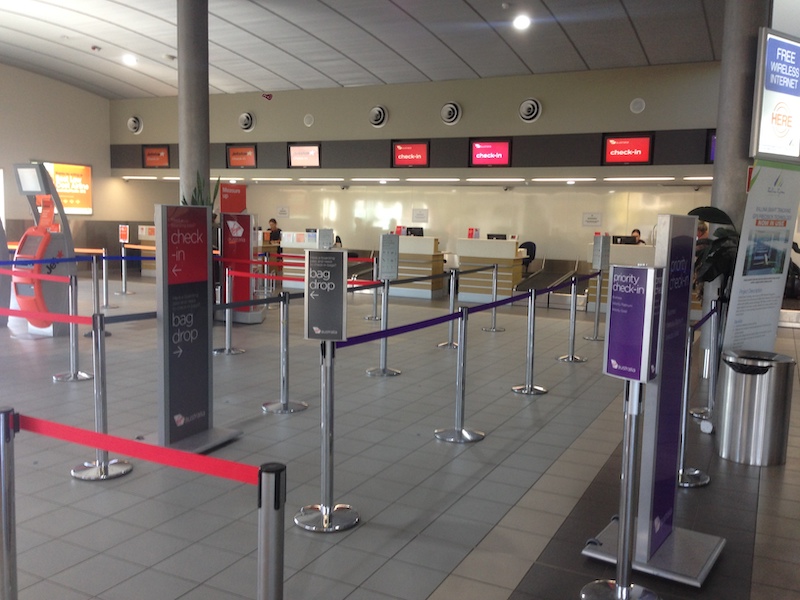As a kid it wouldn’t be unusual to be put in a bath with the neighbours’ kids or my cousins if our family were visiting or those after work drinks turned into dinner. Generally though, people stop sharing baths with strangers long before it gets too squashy to fit in the bath. The exception of course is sharing a bath with a special someone. In these cases, candles and champagne are often also featured (Although it has been a while since I’ve lived anywhere with a bath that fits two grown men). Alas, I’ve gone off topic… back to the hot springs.
Call it a thermal spring and it suddenly seems to be ok to share that tepid bath with as many strangers as you like. Bathhouses, thermal springs, hot springs – whatever you call them, they are a massive industry touting benefits for many aliments. Whether any of these are scientifically proven or not, people have been flocking to the bathhouses around Budapest for hundreds of years, so there must be something in it. Often on holidays we find ourselves checking out the local thermal springs and relaxing some travel weary muscles in their healing waters.
Earlier this year, we ended our summer European vacation in Budapest. After a month travelling across Europe, exploring city after city and taking tens of thousands of steps each day, our legs were in need of some relief. Here’s were Budapest’s thermal baths came in handy. With only time for two, we narrowed the selection down to Rudas Baths and the massive Széchenyi Thermal pools. Both bathhouses brought something different to the equation, so it was nice to try a couple. Here’s what I thought of the two we managed to visit on our last trip.
Bathhouse # 1: Rudas Baths
Our first experience with the bathing scene in Budapest was the 16th century Rudas baths. The centrepiece of the complex is the octagonal pool beneath the 10 metre wide dome. In each corner there are smaller pools, each of varying temperatures allowing you to warm up (or cool down) gradually in the spring fed mineral waters. Off to the side are steam rooms and a network of increasing temperature saunas for sweating out your stresses. Getting to the last sauna room was intense heat – I’m not sure how people managed to sit there without withering away to a prune. While the Turkish octagonal pool complex is the main attraction and is the oldest part of Rudas Baths, there is much more to try including a rather short lap pool (two strokes and you’re done) and a very modern relaxation centre with modern spas and pools.
On our visit we spent most of our time in the traditional Turkish baths area. Built during the Ottoman rule, these baths come with a very Turkish feel and culture to bathing. With segregated bathing on set days, swimwear is ditched for loin cloths and aprons as men soak away their worries together letting it literally all hang out. The male only nude bathing wasn’t the main attraction (although it wasn’t a detraction either) with it was easy to spot the tourist from the locals. While modern cinema have glamourised bathhouses to be full of hot sweaty men that have never eaten a burger and train at the gym five times daily, the clientele here were a mix of all body shapes.
The local men were much more relaxed about being nude in public and happy to unwind and relax than many of the tourists. The western attitudes towards nudity and modesty probably reduces the number of visitors, given our general prudish nature when it comes to socialising in the buff. While there were some tourists, it was much quieter and less overrun than the next bathhouse we visited in Budapest. While I’m not a nudist by any means, it was rather relaxing just chilling out in the nude and moving from pool to pool. I’ll admit that the loin cloth apron thing was rather confusing (e.g. you wear it in the water?) and didn’t seem to offer any modesty anyway so was much easier to go el’ natural. Rudas was very much about relaxation and letting that thermal water do whatever it is supposed to do. Due to the naked nature of the complex, I didn’t get any photos, but it was definitely worth a visit to view the stunning old baths and relax our holiday fatigued legs.
Bathhouse # 2: Széchenyi Thermal Baths

Széchenyi Thermal Baths are a must see bathhouse in Budapest and one of the more popular attractions. Now open to both men and women, its much easier for couples and families to attend these baths than others in Budapest. Getting here was a short ride on the adorable underground trains from the main attractions in Pest and the baths are located in the middle of City Park. The baths are fed from two thermal springs beneath the city and, according to Wikipedia (yeah I know) it uses a whopping 6 million litres of water a day!
There is pretty much something for everyone in this sprawling complex of indoor and outdoor pools. The ticketing is complicated with so many packages available but little guidance on what each actually provides. Once we got an entry ticket there are a series of changing booths that you pass through to get into the bathing complex. It is a pretty clever design (once you work it out) to get from street wear to swim wear. First, you open the cabin door, step inside and close the door behind you and pull down the bench which acts as a lock for the door. Once changed, you lift the bench and exit to the opposite side to enter the main locker rooms where you can store your stuff in one of the many rows of lockers. I say it was a clever design, once you understood it as there was more than one visitor that wondered why different people came out of the booths after their companions entered (including me).

Once inside you can either stay indoors and try one of the 15 different indoor pools or even try a beer spa (which includes unlimited beer!). The main attractions are outside with three grand pools being the place to be seen. Győző Czigler started to build the complex in 1909, and the Neo-Baroque architecture that surrounds the pools is simply beautiful.
The waters are warm and filled with people just standing around or bobbing in the healing thermal waters. The other main attracting seems to be taking selfies of a summer tan/body with the beautiful yellow neo baroque buildings in the background. The grand pool towards the back has a fun whirlpool in the centre and lots of fountains to cool down under as the sun beats down. There is also a lap pool in the centre which seems to be were the few locals pushed through their swimming workouts.
Being extremely white and sensitive to the sun, we spent most of our time indoors, but you could tell that the outdoor pools was were the party was at (other than the beer baths, which I presume would also be pumping). These baths were much more mixed and home to a heavily tourist oriented crowd. Széchenyi appears to be more about having fun and showing off that summer body than relaxing. Whether you’re a bathhouse regular or just interested to trying it, there would be a pool you’ll enjoy at this massive complex or one of the 10 sauna rooms beneath the main building. If you’re sick, there is even a hospital treatment program that includes the baths!
Budapest Bathhouse Verdict
I must say that spending a few hours soaking in other people’s filth is actually a really nice way to wrap up a vacation. Given its naturally fed and constantly changing, the water is probably cleaner than your bath at home, so calling it soaking in filth is probably a little harsh. The two bathhouses that we tried in Budapest were so different to each other and provided an insight into the variety of traditional bathhouses that have called Budapest home for centuries. The Romans were the first to use the thermal waters, the Turkish added their mark and now visitors from around the world come to Budapest to relax or party in its thermal waters.
Visiting the Bathhouses of Budapest was a great way to relax at the end of a day and the end of a great trip across Europe this summer. I’d love to come back in winter and try them in the cold – I’m sure those mineral rich waters will warm you up after a cold winters day.

Gellért Thermal Springs
A short walk from the Rudas Baths you'll find the Liberty Bridge which looks pretty good at sunset and is close to another popular bathhouse, the Gellért Thermal Springs. We considered trying this too but simply ran out of time.

Take the Metro...
The fun of getting to Széchenyi Thermal Baths is taking the Metro Train to the city park. These short trains zoom between stations on the underground line in Budapest. While cute, they are pretty effective (and cheap) to get to City Park from downtown Budapest.









